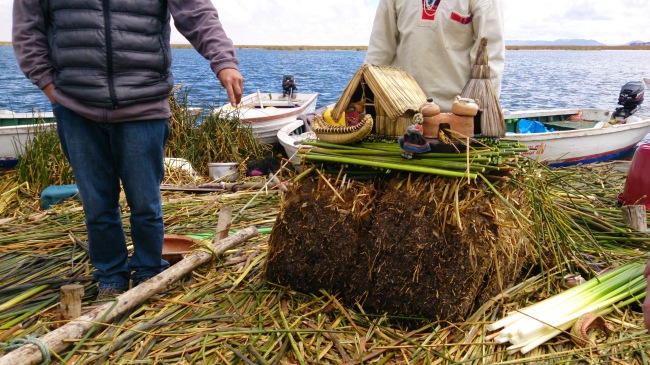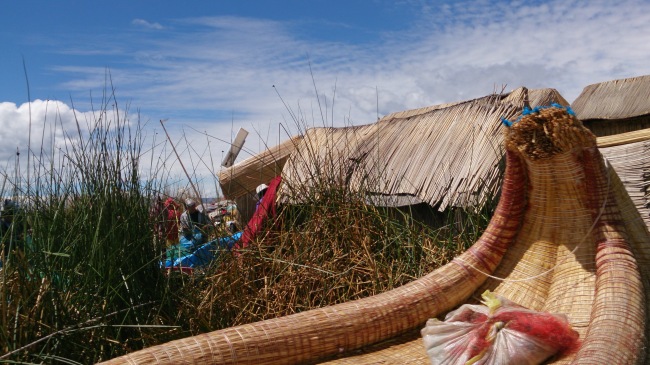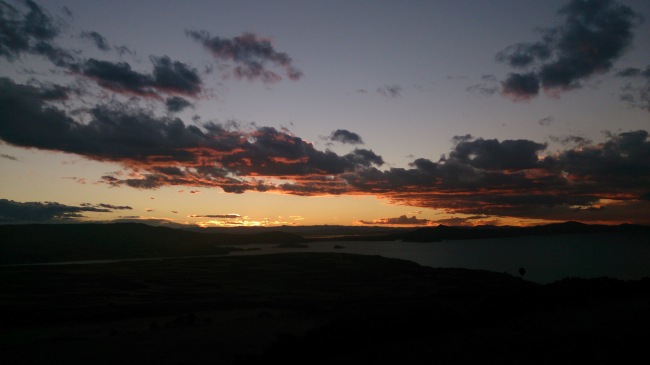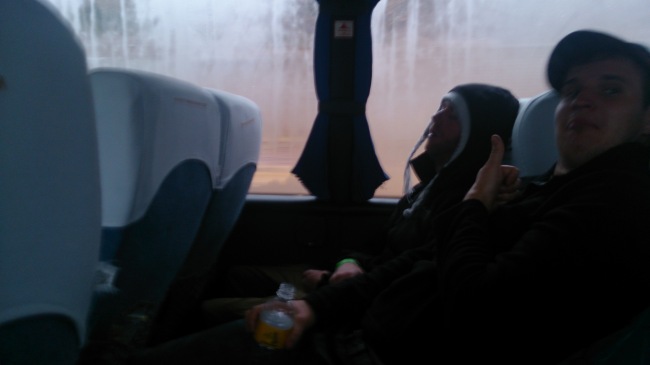Went to bed fully clothed, under layers of blankets and still rise feeling the hollow cold that comes with high altitude. We were given a quick breakfast before being hustled down to the quayside, barley giving us a chance to say good-bye to our hosts and leave some small parting gifts.
Swiftly board the H.M.S Leaky Bottom and make way on a 2 hour steam to neighbouring Taquile for a guided walk and lunch. The water is choppy for a boat of this size, but in reality is very calm, with clear skies and a bright sun overhead. Nonetheless some are still suffering from the gentle rocking and head outside for fresh air.
The pier at Amantani creates a small marina for shelter. Taquile’s sticks out into the water offering little of anything. Rising ahead of us is the rocky slopes of this long, thin island. A nicely-laid stone path crawls around the island to where the centre of the community, a pleasant square, sits on a plateau on the terraces. The square is fringed on three sides with stone buildings, a chapel, and is open along its Eastern edge, providing a sweeping view over the lake to Bolivia. Here we took a break to enjoy the peace and quiet before being guided onwards to a house on the other side of the ridge where we would have lunch.
As we squeezed through the narrow gaps between the buildings, we were dropped onto a wonderful terrace overlooking the lake. A long table had been laid and set, underneath a pale yellow canvas awning, bathing the space in a dull glow, shielding us from the intense sun. The view was truly astounding, and not for the first time I’d felt we were perched on the Mediterranean coast instead of an island lake in Peru.
My lake-gazing was interrupted by our host, wearing the traditional attire of the island’s inhabitants (not dissimilar to that of the reed island inhabitants), who gave us a small talk of his life here. This was followed with our lunch, a vegetable soup, and roasted trout from the lake. The dinner was a welcome change from what we’d had on the trek and left me feeling quite satisfied. A cold beer to follow this up was just the perfect accompaniment to kick back and relax, lazily staring out over the sapphire waters.
Sadly paradise isn’t permanent, and we were back on the boat and making for Puno before the cold of the beer had left me. The steam back was at least 3 hours if not more. By the time we arrived back in Puno the clouds were slowly blotting out the sun, leaving us a little down and out after the day’s auspicious start. Collectively we missed Cuzco’s cobbled streets and did not look forward to another rainy night in Puno’s congested streets. Relaying this to our guide we quickly elected for the night bus back home. We would have some time to ourselves before boarding later in the evening for a gunshot ride to the Incan heartland.
Note: overnight buses are rarely pleasant, regardless of class or destination.
Arriving in Cuzco around 3am we were thrilled to see our home away from home – Ecopackers Hostel! Checking in under the cover of darkness, I scurried up to my room and quickly went to sleep, exhausted from the patchy sleep on the bus.







